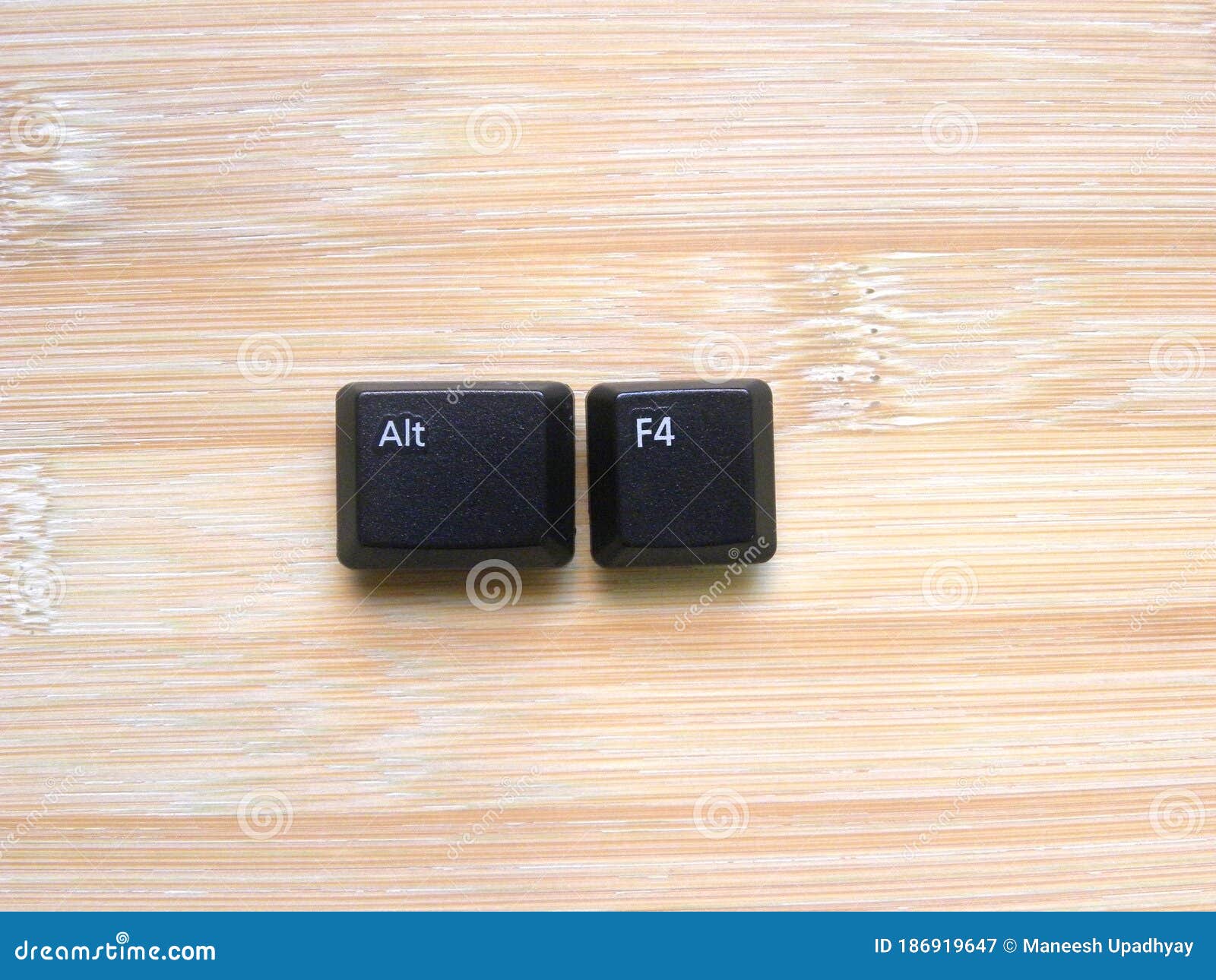What Does Alt F4 Do - A Comprehensive Guide For Everyday Use
Ever wondered what happens when you press Alt F4 on your computer? It's one of those keyboard shortcuts that’s been around for years, quietly doing its job without much fanfare. Yet, it remains a mystery to many users who stumble upon it by accident or hear about it in passing. This simple combination of keys holds more power than you might think. Whether you're looking to close a pesky window, shut down your system quickly, or just want to impress your friends with some tech know-how, Alt F4 is your go-to shortcut. In this article, we'll explore everything you need to know about this unassuming but mighty key combo.
For those who’ve experienced unexpected behavior when hitting Alt F4, fear not—you're not alone. Many users report oddities, like the shortcut behaving differently depending on the program or even the version of Windows they're using. Some have even noticed their screen flickering or going black after pressing it, which can be alarming. But don’t worry, we’re here to clear up the confusion. Understanding exactly what Alt F4 does and how it interacts with your system can save you from frustration and help you harness its full potential.
Before we get into the nitty-gritty, let's touch on why knowing about Alt F4 is useful. Sure, you could always use the mouse to close windows or shut down your computer, but keyboard shortcuts are all about saving time and effort. In a world where efficiency matters, mastering shortcuts like Alt F4 can make a big difference in your daily workflow. Plus, it’s just cool to know these things, right? Let’s dig into the details so you can use this shortcut like a pro.
What Does Alt F4 Do Exactly?
Alright, let’s start with the basics. When you press Alt F4, it tells your computer to close whatever window or application is currently active. That’s its main job—closing stuff. For example, if you’re browsing the web and decide you’re done, you can press Alt F4 instead of reaching for the little X button in the corner. It’s a quick and easy way to get rid of windows without moving your hands off the keyboard.
Now, here’s the kicker: if there’s no active window open, pressing Alt F4 brings up the shutdown menu. This means you can shut down, restart, or log out of your computer straight from the desktop. Pretty handy, huh? Sometimes, though, people run into issues where Alt F4 doesn’t behave as expected. Maybe it flickers the screen or triggers something else entirely. Don’t panic—it’s usually just a small setting or hardware quirk that can be fixed.
How Does Alt F4 Work Compared to Ctrl F4?
Let’s clear up any confusion between Alt F4 and Ctrl F4, because they’re not the same thing. While both are used to close things, they do it differently. Ctrl F4 typically closes the current tab or document within a program, leaving the main application open. On the other hand, Alt F4 closes the entire application itself. So, if you’re working in a browser with multiple tabs, Ctrl F4 will only close the one you’re on, whereas Alt F4 will close the whole browser.
There’s another twist, though. Some programs treat both shortcuts the same way if they only use one window per document. This can lead to some mix-ups, but it’s usually not a big deal. Just keep in mind that Alt F4 is the more thorough option when you want to completely exit a program.
Why Does Alt F4 Sometimes Act Strangely?
Sometimes, Alt F4 acts a little funny. Like, instead of closing a window, it makes the screen flicker or goes black for a second. Or maybe it doesn’t do anything at all. This often happens when certain keys aren’t working properly or when the function keys (like F4) are set up differently. For instance, some laptops have brightness controls tied to the F4 key, so pressing Alt F4 might trigger that instead of closing a window.
If this is happening to you, try using the left Alt key instead of the right one. A lot of users find that the right Alt key behaves differently in certain situations. Another solution could be adjusting your keyboard settings or checking if there’s a specific key combination required to use the function keys as intended. It’s all about finding what works best for your setup.
What Happens When No Programs Are Open?
So, what if you press Alt F4 when there aren’t any programs running? In that case, it brings up the shutdown options dialog. You’ll see choices like shutting down, restarting, or signing out. This is super useful if you want to turn off your computer quickly without going through the start menu. Just make sure you’re ready to exit everything before hitting those keys, because once you confirm, there’s no turning back.
Can You Use Alt F4 to Close All Programs at Once?
Well, kind of. If you want to close all your open programs and get back to the desktop, you can repeatedly press Alt F4 until everything shuts down. It’s not the fastest method, but it gets the job done. Alternatively, you can hit Win D to minimize all windows and then press Alt F4 to bring up the shutdown menu. This approach is faster and cleaner, especially if you have a lot of programs running.
What Does Alt F4 Do When Used with Other Keys?
You can combine Alt F4 with other keys to perform different actions. For example, pressing Win D followed by Alt F4 takes you straight to the shutdown options. Or, if you want to log out instead of shutting down, you can hold down Shift while pressing Alt F4. These combinations give you more control over how you exit your programs and system, making them even more versatile.
Of course, you don’t have to memorize all these combinations right away. Start with the basics and experiment as you go. Over time, you’ll discover which ones work best for your workflow. And hey, if you ever forget, you can always look it up again—it’s not like you’re expected to be a wizard overnight.
Is Alt F4 Only for Windows?
Not exactly. While Alt F4 is most commonly associated with Windows, similar shortcuts exist on other operating systems. For instance, on macOS, you can use Command Q to quit applications. The concept is the same: close the active window or application quickly. Each system has its own way of doing things, but the goal is always to make life easier for the user.
That said, Alt F4 is uniquely tied to the Windows experience. It’s been around since the early days of Windows and remains a staple for power users. Even though newer versions of Windows have added features and changed how things work, Alt F4 has stayed consistent. It’s like an old friend you can always count on, even as everything else changes.
What Does Alt F4 Do in Games?
Gamers might be familiar with Alt F4 for a slightly different reason. In many games, pressing Alt F4 will instantly exit the game. This can be both a blessing and a curse. On one hand, it’s great for quickly quitting if something urgent comes up or if the game crashes. On the other hand, it can be frustrating if you accidentally press it during an intense moment.
Some games allow you to disable this shortcut in the settings, which can prevent accidental exits. If you’re a gamer who finds themselves hitting Alt F4 by mistake, it might be worth checking if this option is available. After all, nobody wants to lose progress just because their fingers slipped.
What Does Alt F4 Do in Special Situations?
There are a few special cases where Alt F4 behaves differently. For example, if you’re using a program that doesn’t have a standard window, Alt F4 might not work at all. Or, if you’re running a program in full-screen mode, pressing Alt F4 might minimize it instead of closing it. These quirks depend on how the program was designed and how it interacts with the operating system.
In some instances, Alt F4 might trigger other actions, like bringing up a save prompt or asking if you’re sure you want to exit. This is usually a safeguard to prevent accidental data loss, but it can still catch you off guard if you’re not expecting it. Just be aware that every program handles Alt F4 slightly differently, so results may vary.
Final Summary
In short, Alt F4 is a versatile keyboard shortcut that helps you close windows, shut down your computer, and even exit games. While it’s most commonly used in Windows, similar shortcuts exist on other platforms. Its behavior can vary depending on the program or situation, but its core function remains the same: to close whatever is currently active. Whether you’re looking to boost your productivity or just want to learn something new, mastering Alt F4 is a step in the right direction.
By the way, if you ever run into trouble with Alt F4, don’t hesitate to troubleshoot. Check your keyboard settings, try different combinations, or consult online forums for advice. Most issues can be resolved with a little patience and experimentation. So go ahead and give it a try—you might be surprised at how much you can accomplish with just two keys.
Table of Contents
- What Does Alt F4 Do Exactly?
- How Does Alt F4 Work Compared to Ctrl F4?
- Why Does Alt F4 Sometimes Act Strangely?
- What Happens When No Programs Are Open?
- Can You Use Alt F4 to Close All Programs at Once?
- What Does Alt F4 Do When Used with Other Keys?
- Is Alt F4 Only for Windows?
- What Does Alt F4 Do in Games?

What does alt + f4 do - alfatoo
What does alt + f4 do - softfoz

Alt+F4 (@alt_f4_plus) / Twitter